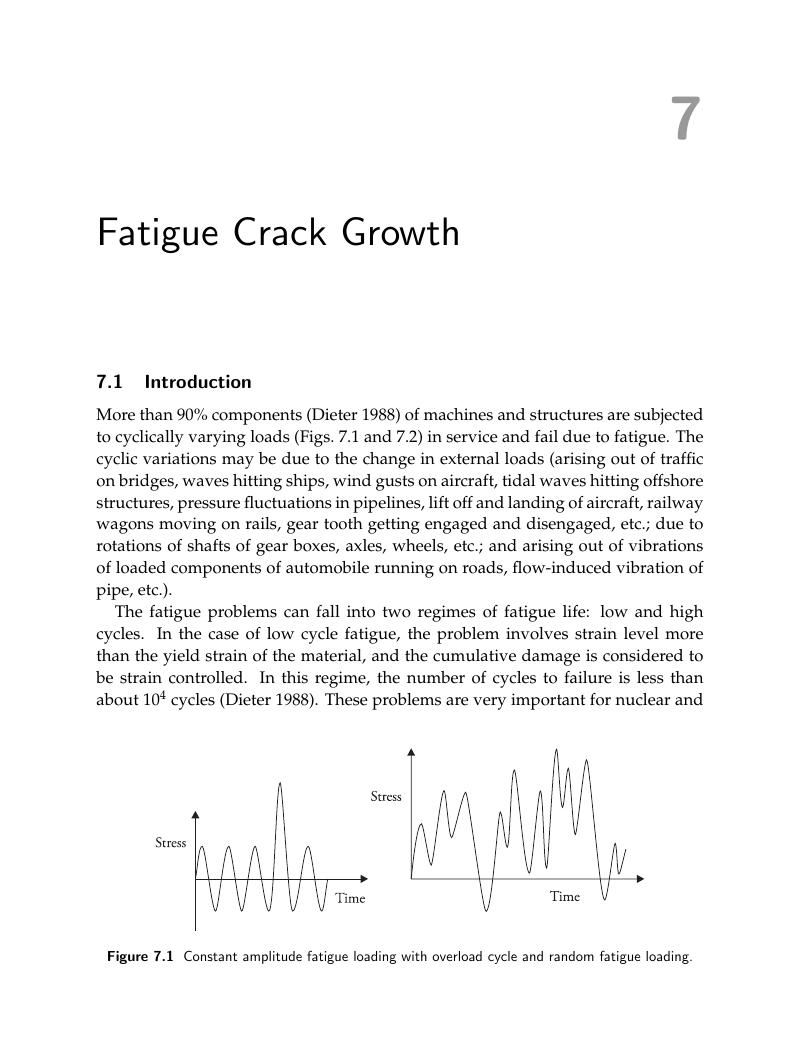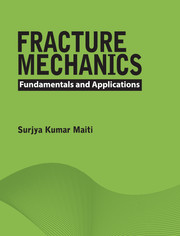Book contents
- Frontmatter
- Dedication
- Contents
- List of Figures
- List of Tables
- Preface
- 1 Introduction
- 2 Linear Elastic Fracture Mechanics
- 3 Determination of Crack-Tip Stress Field
- 4 Crack Opening Displacement, J Integral, and Resistance Curve
- 5 Determination of Stress Intensity Factors
- 6 Mixed Mode Brittle Fracture
- 7 Fatigue Crack Growth
- 8 Elastic Plastic Fracture Mechanics
- 9 Experimental Measurement of Fracture Tougness Data
- Index
- References
7 - Fatigue Crack Growth
Published online by Cambridge University Press: 05 February 2016
- Frontmatter
- Dedication
- Contents
- List of Figures
- List of Tables
- Preface
- 1 Introduction
- 2 Linear Elastic Fracture Mechanics
- 3 Determination of Crack-Tip Stress Field
- 4 Crack Opening Displacement, J Integral, and Resistance Curve
- 5 Determination of Stress Intensity Factors
- 6 Mixed Mode Brittle Fracture
- 7 Fatigue Crack Growth
- 8 Elastic Plastic Fracture Mechanics
- 9 Experimental Measurement of Fracture Tougness Data
- Index
- References
Summary

- Type
- Chapter
- Information
- Fracture MechanicsFundamentals and Applications, pp. 168 - 201Publisher: Cambridge University PressPrint publication year: 2015



